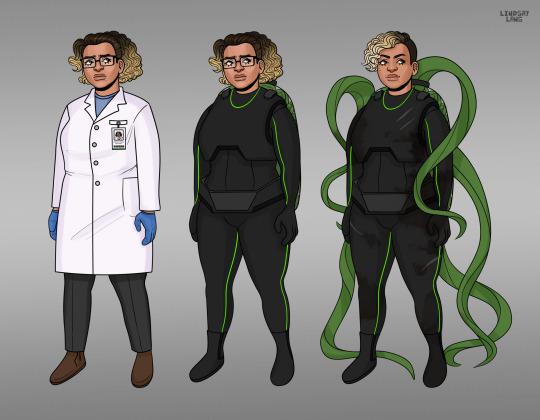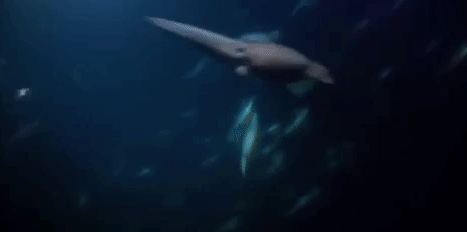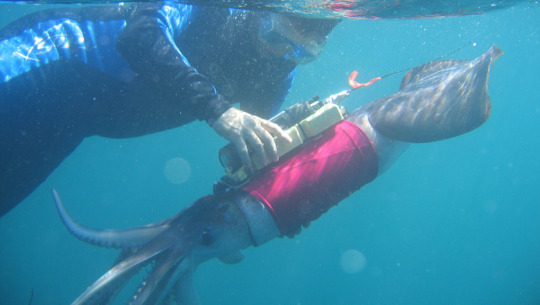#mexican scientists
Text

Lead study Mexican author Luis Rodríguez, a professor emeritus at the Institute of Radio Astronomy and Astrophysics at the National Autonomous University of Mexico
In 2023, the James Webb Space Telescope (JWST) helped identify hundreds of free-floating "rogue" planets that don't orbit a parent star. Now, astronomers have found that a pair of these planets may be producing enigmatic, hard-to-interpret radio signals.
The rogue planets spotted by JWST lie in the Orion Nebula, a long-time observational hotspot for astronomers. In total, they number over 500. This discovery bonanza was possible thanks to JWST's ability to pick up infrared radiation emitted by these relatively young planets.
Bizarrely, though, about 80 of these planets exist as pairs. Similar in mass to Jupiter, the planets orbit each other at distances ranging from 25 to 400 times the distance between Earth and the sun. These tangoing duos, called Jupiter-mass binary objects (JuMBOs), pose a huge mystery for astronomers, because the existence of these worlds challenges current theories of planet formation. Some scientists think these objects may not even be planets but rather previously unknown entities that are larger than planets but smaller than brown dwarfs, which are sometimes called "failed stars" because they blur the line between planets and stars.
The JWST data showed that JuMBOs generated infrared radiation, but the new study's authors wanted to see if these dancing objects produced radio waves. That's because different classes of cosmic objects produce distinct patterns of radio emissions. For instance, planets like Jupiter spew several types of radio signals, including gigahertz-frequency emissions thousands of times higher-pitched than an FM signal, partly because of their magnetic fields.
Spotting such signatures from the JuMBOs could help resolve their identity. The observations could also explain "why some objects have detectable radio emission and others do not," lead study author Luis Rodríguez, a professor emeritus at the Institute of Radio Astronomy and Astrophysics at the National Autonomous University of Mexico, told Live Science in an email.
To find radio wave "snapshots" of the Orion Nebula where the JuMBOs reside, the scientists combed through archives of observations maintained by the U.S. National Radio Astronomy Observatory (NRAO). They found just one pair that apparently emits radio waves: JuMBO 24. Itself an oddity among the oddball objects, it's the heaviest of the JuMBOs, and also the one with the tightest space between its component planets.
A decade's worth of data the research team collated showed that the radio waves remained steady but strong, with a power of roughly a quarter of a ton of TNT and frequencies of 6 to 10 gigahertz. The radio waves also weren't circularly polarized, meaning they lacked spiral, twisting electric fields, the team reported in their study, published Jan. 8 in The Astrophysical Journal Letters.
But these features aren't what astronomers expect of signals created by planets." Circular polarization is an unambiguous indicator of the presence of magnetic fields," Rodríguez said. Without this, the team can't say definitively that the signals come from JuMBO 24 (assuming the planets have magnetic fields). Besides, radio emissions from other exoplanets are more variable and less intense.
Even if JuMBO 24 isn't a pair of planets but rather another type of cosmic duo, the signals are unusual. Signals from brown dwarfs are very different from the newly identified radio beams. The beams' brightness and frequency even ruled out the possibility of pulsars, the rapidly spinning cores of dead stars that produce pulses of radio waves at regular intervals.
The researchers also estimated the likelihood that the signals originate from an object behind JuMBO 24 and found it to be exceedingly slim, at just 1 in 10,000. And, in case you were wondering, the signals probably don't originate from aliens. "The fact that both components emit at similar levels favors a natural mechanism," Rodríguez said.
With the research at an impasse, the team is applying to the NRAO's Very Large Array in New Mexico to collect data from free-floating planets. Until then, the radio signals will remain a mystery.
#🇲🇽#STEM#Luis Rodríguez#mexican scientists#astronomy#science#Institute of Radio Astronomy and Astrophysics#National Autonomous University of Mexico#James Webb Space Telescope#JWST#radio signals#planets#orion nebula#Jupiter-mass binary objects#JuMBOs#brown dwarfs#jupiter#JuMBO 24#The Astrophysical Journal Letters#pulsars#mexican#latino#hispanic
10 notes
·
View notes
Text
El Niño's back in the Pacific and Mexican scientists are diving deep to understand its impact. Aboard El Puma research vessel, they're studying El Niño's effects on climate, marine life and more. Their findings will help communities adapt and prepare for future El Niño events.
#el niño#pacific ocean#mexico pacific#mexican scientists#El Puma research vessel#El Puma#research vessel#marine life#effects on climate#climate
1 note
·
View note
Text

The tasty tomatillo (Physalis philadelphica) is where we get the English name “tomato”. The tomatillo is a domesticated version of wild plants found in Central America and is known in the Nahuatl language as “tomatl”. This plant is related to tomatoes because it is a member of the Solanaceae family, but it is not a tomato! This fruit grows in a husk that resembles a paper lantern and when it’s ripe the husk splits to reveal the plump green fruit. The tomatillo is the main ingredient of Mexican / Tex Mex salsa verde.
#katia plant scientist#botany#plant biology#plant science#plants#tomatillos#tomato#green#plant scientist#plant#plant aesthetic#plantblr#plantcore#greenhouse#edible plants#nahuatl#mexican food#aztecs#indigenous food#salsa verde#fruit#exotic fruit#gardening
64 notes
·
View notes
Text
one night while pondering azian vance's history and personality and esteemed deeds i thought abt that one anecdote about how ann duryan and carl sagan fell in love while working on the voyager golden record and thought it'd be cute for them if they had a similar experience before signing on with black mesa. like, they got signed as a package deal, both of them up and coming physicists with some hot thesis on ok i think it'd be kind of sweet if it had to do with gravity somehow. that perhaps an early version of the gravity gun was imagined by the two of them, and black mesa was interested in it for its utility in handling hazardous materials. what if
#c:\HEV#eli vance#azian vance#accomplishes objectives of declaring that azian was a scientist as well and figuring out whether she and eli#had an underground new mexican meet cute or if they were an item before then#they probably did a lot of different work before going 'hey this job would let us live on site and settle down'
31 notes
·
View notes
Text










El espejo de la bruja (The Witch's Mirror, 1962)
"Elena. Elena!"
"What? Can't you see me?"
"I couldn't help you. You were marked by fate. I couldn't help you when you were alive, but I promise to avenge your death."
#el espejo de la bruja#the witch's mirror#horror imagery#mexican cinema#1962#chano urueta#alfredo ruanova#carlos enrique taboada#rosita arenas#armando calvo#isabela corona#dina de marco#carlos nieto#alfredo wally barrón#gustavo césar carrión#abel salazar#a very busy‚ slightly silly but really quite fun little film. starts off very modestly‚ a tight 4 character piece in a single location#a sudden and genuinely unexpected hard turn into mad scientist lunacy at around the halfway mark does open it up a little: more characters#more settings‚ more wild weirdness. still very much a budget picture but the scope is definitely larger‚ the overall vision on a grander#scale. some of the onscreen horror in this second half (particularly the medical gore) feels remarkably ahead of its time; truthfully there#were films beginning to push the envelope in that regard already‚ across the world‚ but there's something about the coldly dispassionate#clinical nastiness and the bloody detail here that feels a little jarring and like it's maybe at the wrong end of the decade#also of note are some intermittently breathtaking visuals‚ particularly work with light and shadow and silhouette (almost always#relating to Isabela Corona‚ stunningly backlit on a mist shrouded twilight). if only the film could have sustained those visuals for its#entire running time‚ this would surely be one of the most celebrated horror films of its era#still it is a lot of fun and absolutely crazy in the second half. well worth finding for nasty little horror freaks (aka me)
3 notes
·
View notes
Text
there’s so many characters i just assumed weren’t white when i first heard of them. like for no reason too. Peter was a lightskin Mexican dude and Gwen was half-Japanese 😭😭 where did that even come from ??
#over the years scientists have yet to replicate the way my brain gets every detail wrong. it’s a talent for real#but yeah peter was just. not white the first time i even heard of spider-man#but that’s probably because i’m not white so i was projecting . maybe?#not tagging#you wouldnt believe me if i told you but peter in the biker au is ace (as all peters are to me) and mexican
6 notes
·
View notes
Text

Dr. Gabriela Ibarra is a biologist and horticulturist. A life-altering accident causes her to form a symbiotic relationship with a mutated plant
#character design#concept art#character concept art#character ref sheet#character reference sheet#Hispanic#Mexican#scientist#poc#woc#futuristic#my art#digital art
11 notes
·
View notes
Text
youtube
#2024#music#spectrum pulse#billboard hot 100#billboard BREAKDOWN#billboard hot 100 january 27 2024#ariana grande#21 savage#kali uchis#peso pluma#lil nas x#muni long#that mexican ot#mariah the scientist#burna boy#metro boomin#mikky ekko#summer walker#brent faiyaz#lil durk#young thug#travis scott#doja cat#Youtube
0 notes
Text
Scientists share update on Mexican three-fingered ‘alien corpses’ | In Trend Today
Scientists share update on Mexican three-fingered ‘alien corpses’
Read Full Text
or
Full Article on MAG NEWS

View On WordPress
#Celebrities#Money#Motors#Politics#Scientists share update on Mexican three-fingered ‘alien corpses’#ShowBiz#Sport#Tech#UK#US#World
0 notes
Text


Can you guys tell us about the flexibility of the alien babies ribs?
If you find out, that motherfucker is lying, I want Luigi to kill him
0 notes
Text
Rafael Navarro-Gonzalez (1959-2021): The Mexican Astrobiologist Who Shaped Our Understanding of The Planet Mars

Rafael Navarro-Gonzalez was a talented and internationally recognized chemist and astrobiologist who worked at NASA. Navarro-Gonzalez is known for his work with other researchers to study the planet Mars. He made fundamental contributions to several fields related to Astrobiology, the origin of life, and life in extreme environments. Among his many accomplishments, he helped lead the team that identified ancient organic compounds on Mars. He was a Co-I on the SAM instrument onboard NASA’s Mars Science Laboratory and on the HABIT instrument onboard ESA’s ExoMars mission. He was also on the Curiosity Mars rover team. His research blended laboratory simulations, fieldwork, and theoretical modeling in transdisciplines in chemistry, physics, and biology. This sort of dominance is unusual and requires a dynamic and intellectual curiosity beyond normal boundaries. He identified the role of volcanic lightning in the origin of life on Earth. He has established one of the very best laboratories in Latin-America.
He has published 137 papers, 4 edited books and over 225 abstracts. Among the most significant contributions are those that deal the detection of organics in Mars-like environments from cold (Antarctica), temperate (Atacama) and hot (Mojave and Libya) deserts on Earth.
Navarro-Gonzalez was born in Mexico City on April 25, 1959. He earned a bachelor’s in biology from the National Autonomous University of Mexico (UNAM) where he became full professor in 2002, and a PhD in Chemistry from the University of Maryland at College Park. Dr. Navarro-González established the Laboratory of Plasma Chemistry and Planetary Studies of the Institute of Nuclear Science at UNAM.
Rafael Navarro-Gonzalez was the first recipient of the Molina fellowship award. This prize recognizes outstanding scientific achievement. He was also the recipient of the 2009 Alexander von Humboldt Medal and the World Academy of Sciences Award in Earth Sciences.
He died on Jan. 28, 2021 due to Covid-19-related complications.
In honor of his service, NASA named a mountain on Mars after him. The mountain stretches 450 feet (120 meters) tall, “Rafael Navarro Mountain” is located on Mount Sharp in northwest Gale Crater.

Rafael Navarro Mountain
“Rafael was a good friend and dedicated scientist, and it has been a privilege and honor for our Mars exploration team to work with him over the years" said the principal investigator of Curiosity’s SAM experiment.
“We are truly honored to have a prominent hill named after our dad; it’s his and our dream come true to see this happen,” wrote Navarro-González’s children, Rafael and Karina Navarro Aceves, in a statement to NASA.
“Our dad was an accomplished scientist, but above all, a great human being who managed to balance work and family."
Sources: (x) (x) (x) (x) (x) (x)
#🇲🇽#STEM#Rafael Navarro-Gonzalez#mexican scientists#astronomy#mars#NASA#Mars Science Laboratory#SAM instrument#HABIT instrument#ESA#ExoMars mission#Curiosity mars rover#latin america#volcano#meteorology#antartica#atacama#mojave desert#libya desert#UNAM#National Autonomous University of Mexico#Laboratory of Plasma Chemistry and Planetary Studies#Institute of Nuclear Science#Molina fellowship award#2009 Alexander von Humboldt Medal#World Academy of Sciences Award#covid-19#coronavirus#Rafael Navarro Mountain
4 notes
·
View notes
Text



If you love Mexican salsa verde, here’s the main ingredient - the Tomatillo (Physalis philadelphica). The Tomatillo, which means “little tomato” in Spanish, is an indigenous American food crop domesticated by indigenous people of Mexico in Pre Columbian times. The plant is called “tomatl” in the Mexica (Aztec) language Nahuatl and the classic tomato (Solanum lycopersicum) is called the xitotomatl (red/yellow “tomatl”), implying that the Tomatillo was possibly domesticated before the tomato. Two species have been domesticated (P. philadelphica and P. ixocarpa), with wild plants naturally ranging from Baja California to Guatemala. Most domestic cultivars are P. ixocarpa, but ours is a Mexican P. philadelphica bred for extra large juicy fruits!
As with many Native American food plants, Tomatillos come in a diverse spectrum of colours, sizes, and flavours. Their “gift wrapped” fruits identify them as close relatives of the sweet Peruvian Aguaymanto or Cape Gooseberry (P. peruviana). The lantern-like husk forms from the flower calyx after pollination and the fruit is ripe when the husk splits. Tomatillos are self-incompatible, so hand-pollination or insect pollination is necessary.
Tomatillos are surprisingly easy to grow in the UK, but a greenhouse is necessary. The tall, leggy plants need supports, regular watering, pollination, and fertilising with blood/fish/bone meal for successful harvests. Tomatillos are best eaten cooked into homemade salsa since some people find their flavour too tangy raw. I recommend blending cooked Tomatillo fruits with Huacatay (Tagetes minuta), onion, and jalapeños for a delicious homemade salsa!
#tomatillos#physalis#edible plants#katia plant scientist#plant science#plant biology#katia hougaard#plants#botany#plant scientist#garden#greenery#flowers#botanical#salsa verde#mexican food#mexican history#yellow and green#greenhouse#paper lanterns#lantern festival#gastronomy#grow your own food#grow your own#gardening tips#gardening#container gardening#horticulture#tropical plants#fruits and vegetables
15 notes
·
View notes
Text
I was so excited about joining that Antarctica group on FB thinking it was gonna be like the Franklin Expedition one
But all they do is post their cruise trip pics 🤢, or people wanting to drop their shit there and 💩
No one gets it and it's both frustrating and sad
#i have come across interesting people/organisations via Instagram tho#there's this Mexican scientist/photographer and she's just been deployed and sofiejfjajjdj#somos fans
1 note
·
View note
Text
I still love New Mexico real estate listings. They’re like “This iconic adobe structure was built in 1843. There is an abandoned flooded silver mine in the back yard. This home served as a brothel, saloon, general store, post office and military base during the Mexican-American War. The abandoned silver mine in the backyard is infested with vampire bats somehow, you’re not allowed to fill it in because scientists are will studying it. The house was remodeled in the 1970s when archeological excavation of the silver mine revealed it had been the dumping site of a serial killer who was active between 1896 and 1901. Three luxurious bathrooms, 5 spacious bedrooms and a lovely courtyard. Billy the Kid stayed here during the Lincoln County War and reportedly haunts the property. In addition to the vampire bat infestation, there are a number of poisonous spiders inhabiting the mine, do not go in the mine. We cannot warn you away from the mine enough. Otherwise, a fantastic property with so much history and so few malicious entities inhabiting the structure and land. $2.3 million dollar asking price.”
3K notes
·
View notes
Text
What to Read After Dracula
If you want to read more Stoker: Dracula’s Guest and Other Stories by Bram Stoker
If you want more foundational genre-defining gothics: Frankenstein by Mary Shelley
If you want homoerotic vampirism that’s both intriguing and problematic: Carmilla by J. Sheridan le Fanu
If you want a gothic heroine fighting against the villain trying to possess her: A Long Fatal Love Chase by Louisa May Alcott
If you want a protagonist entering an extremely fucked up old money home and fighting for their freedom: Mexican Gothic by Silvia Moreno Garcia
If you want basically the same plot as Dracula but a lot more batshit and can put up with 1800s racism: The Beetle by Richard Marsh
If you want a modern take on Dracula that acknowledges the sexual assault subtext: The Southern Book Club’s Guide to Slaying Vampires by Grady Hendrix (note: this one is very hit or miss, people either love it or hate it)
If you want academics fighting ancient evil and an actual implied cameo by Dracula: The Case of Charles Dexter Ward by H.P. Lovecraft (my personal favorite Lovecraft!)
If you want morally ambiguous mad scientists: The Strange Case of Doctor Jekyll and Mr. Hyde and Other Stories by Robert Louis Stevenson (and read the rest of the stories in it while you’re at it!)
If you want rootin’ tootin’ Americans fighting gothic monsters: Pigeons from Hell by Robert E. Howard
If you want a gothic mystery with a spooky villain: The Hound of the Baskervilles by Arthur Conan Doyle
If you want an implied polycule where a nerdy lady does all the real mystery solving: The Woman in White by Wilkie Collins
If you want the kind of vampire romance Dracula has become in pop culture: A Taste of Blood Wine by Freda Warrington
If you want something campier: Haunted Castles by Ray Russell
If you want something sexier: The Bloody Chamber by Angela Carter
If you want something weirder: Blood 20 by Tanith Lee
If you want to read foreign bootleg Dracula: Powers of Darkness or Dracula in Istanbul, both creatively mistranslated from Bram Stoker
10K notes
·
View notes
Text
So a while back I made this post

And it became very popular. While many people already knew, I did get some asking why humboldt squids are scary. So for this Wet Beast Wednesday I'm going to teach you why you should be afraid, or at least respectful, of molluscoid menace that is the humboldt squid.

(image: a humboldt squid)
Known to scientists as Dosidicus gigas and to many others as the jumbo squid, pota, jibia, and diablo rojo, the humboldt squid is the 5th largest squid in the world and the largest of the flying squids. Don't worry, it can't actually fly. They reach an average mantle length (tat's excluding the head and arms) of 1.5 meters, with some specimens reaching up to 2 meters (6.5 ft) in mantle length. The arms can reach up to another meter in length. Adults can weigh up to 50 kg (150 lbs), with females generally being larger than males. They live in the Pacific along the cost of the Americas, from the tip of South America up to California in North America. Some individuals have been known to travel farther north, up to Alaska, which is outside of their historical range. It is possible that as the ocean warms, their native range will continue to expand north.

(image: a humboldt squid releasing ink as a defense mechanism)
Humboldt squids reproduce in deep waters, and as a result we don't know much about their courtship. Males use a modified arm called the heterocotylus to transfer sperm into the female's mantle. She then lays a transparent, gelatinous egg mass that is left to float in the water column. These masses can range between 1 and 4 meters in diameter can can contain up to 4 million eggs. Hatchlings receive no parental care and most will die before adulthood. They grow extremely rapidly, likely as a self-defense against cannibalism by larger squids. Like many squid, humboldts only live for a year and die shortly after mating.

(image: a humboldt squid next to a much braver diver than I will ever be)
As with most cephalopods, the humboldt squid has cells called chromatophores that allow it to change color. Cameras attached to captured and released specimens have show two types of color-changing behavior: flashing and flickering. Flashing is when the animal changes rapidly between red and white. This is done in the presence of other squid and is likely a means of communication, possibly a form of courtship or warning to stay away. Flickering is when waves of red and white travel down the body. This is likely a form of camouflage to blend in with light flickering through the water. In addition to flashing and flickering, cameras have seen multiple forms of color changes and communication behaviors, indicating that they have a rich social life. The red color the squid turns when hunting contributes to its nickname amongst Mexican fishermen: "diablo rojo", the "red devil".

(gif: humboldts changing color)
So all that sounds pretty normal, why are they scary? Well that comes down to their feeding behavior and aggression. Humboldt squids hunt in shoals that can include thousands of members and go into feeding frenzies that can make shark feeding frenzies look like a child's tea party. They are infamous for their aggression and there are many stories of them attacking divers and fishermen. Not even they are immune to their predation, as multiple studies have found between a half and a quarter of all dissected specimens have recently fed on others of their species. Cannibalism may make up a major portion of their diet, though cannibalistic behavior seems to increase in response to stress. Their typical diet consists of fish, crustaceans, and other squids. Humboldts typically keep their two long tentacles coiled up between their arms, only for them to suddenly lash out and grab prey. These tentacles have multiple sharp hooks that have been reported to cause severe cuts in humans. Captured prey is then pulled in toward the beak and consumed. Feeding happens so fast that scientists need to us high-speed cameras to record the capture as the tentacles move so fast they prey can be caught and reeled in between frames. Eating is also fast enough that they can grab a hooked fish and skeletonize it in the time it takes a frustrated angler to pull their catch in. And if that wren't enough, they also engage in cooperative hunting, working together to catch prey. When not feeding or being hunted, they have been described as curious, though they often react to unfamiliar stimuli with aggression. Some divers have reported that humboldts will come investigate them and even act friendly, though I can't say I'd be willing to try it.

(gif: a squid attacking a camera)

(gif: hunting squid)
Numerous fishermen's tales and news stories tell of attacks on humans, but the squid do have a reason to not like us. They are fished heavily, especially off the coat of Mexico and are the most important squid for commercial fisheries. Humboldt squids make up about a third of all squid fished every year and are the most popular food squid. Squid meat is saturated with ammonium chloride, which they use for buoyancy, and must be prepared to remove the taste before eating. Not much is known about threats to conservation, though some speculate that overfishing and global warming disrupting their food supply could threaten the population. They are listed as data deficient by the IUCN. As scary as they might be, humboldt squids serve a very important ecological role in their territories, both as primary predators and as prey to sharks and toothed whales, and more research on their sustainability and conservation needs is important.

(image: a scientist attaching a crittercam to a humboldt squid)
#wet beast wednesday#marine biology#biology#zoology#animals#ecology#animal facts#humboldt squid#jumbo squid#squid#cephalopod#that last picture is adorable#he has a little vest!
864 notes
·
View notes